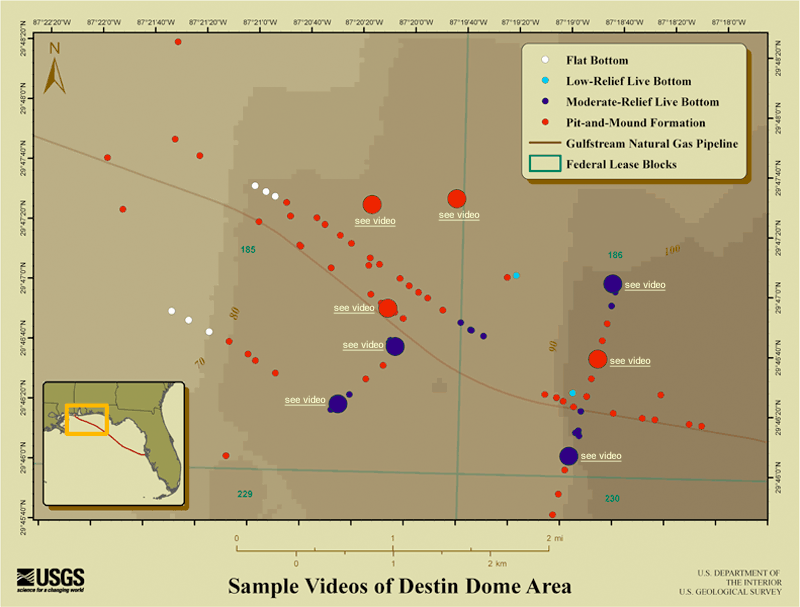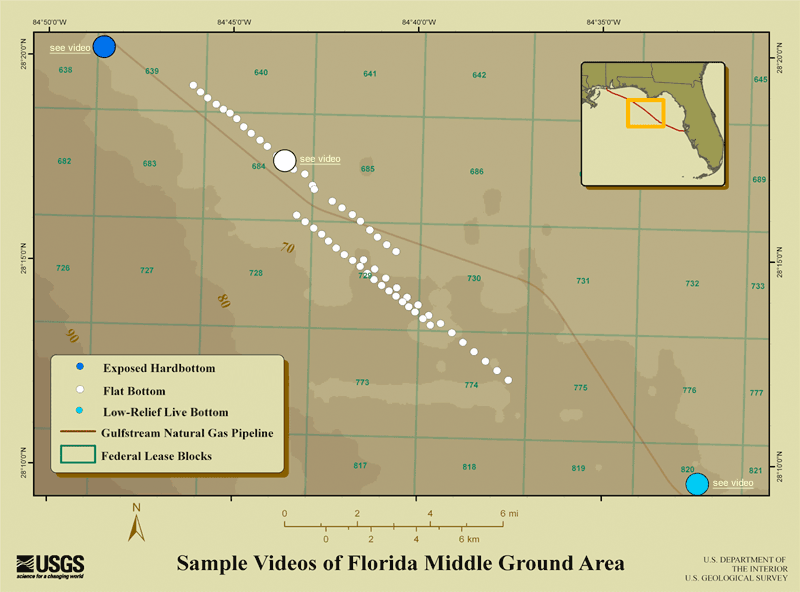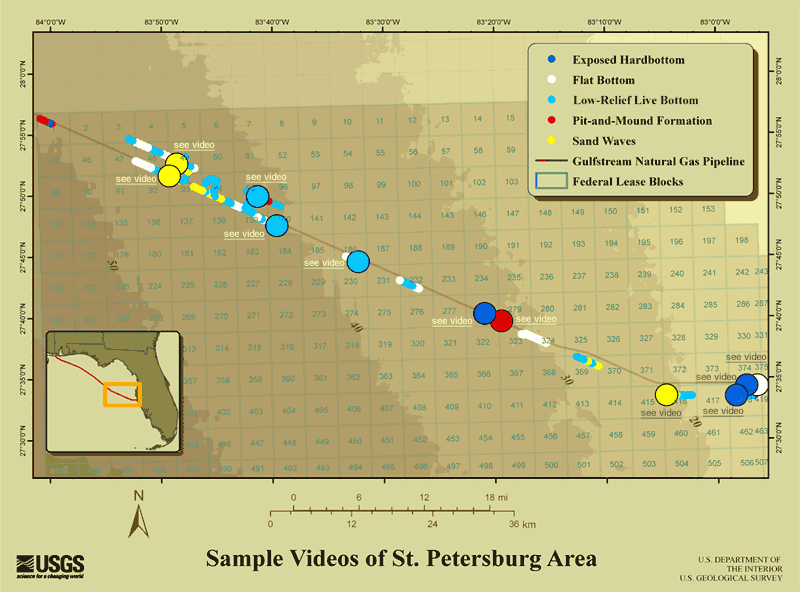USGS Open-File Report 2011-1172
By Ellen A. Raabe, Robert D'Anjou, Domonique K. Pope, and Lisa L. Robbins
Overview | Study Locations | Seafloor Habitats | Habitat Mosaic | Resources
The Gulf of Mexico is the ninth largest body of water in the world. It consists of a shallow intertidal zone, a slightly inclined continental shelf and slope, and a deep abyssal sea, exceeding 3,000 m in depth. The dynamic ecosystem and unusual structure of the gulf establish it as a major resource for offshore oil drilling, commercial and sport fishing, sand, and other natural resources.
The northeastern Gulf of Mexico seafloor, from Alabama to the central Florida Gulf Coast, is characterized by shallow, soft sediments. Along the Florida Panhandle coast and into Alabama, there are substantial influx and deposition of terrigenous sediment from several rivers. To the east and south, the surface deposits transition to carbonate-dominated sediments over a limestone shelf.
The video survey area encompasses 410 km of seafloor, from water depths of 5 to 100 m. The selected clips are available from three general block areas: Destin Dome, Florida Middle Ground, and St. Petersburg. The geographic location of each video segment is an accurate conversion of the x,y coordinates. However, the lease-block number provided for selected clips reflects the starting point of an entire 120-minute video. There is no video footage below approximately 100 m because the camera-cable length was limited.
Each area block is shown with more detail about the habitats and the movie clips available for each type of habitat. Click on the block area of interest and then select a habitat movie to view.
An area block is a geographic unit established by Offshore Energy and Minerals Management (OEMM, a branch of the Federal Bureau of Ocean Energy Management) to designate lease activities on the Outer Continental Shelf (OCS). Each area block consists of 700-1,500 Federal lease blocks of 23 square kilometers each. Each Federal lease block may be evaluated and used for commercial extraction of natural resources, such as oil and natural gas.



